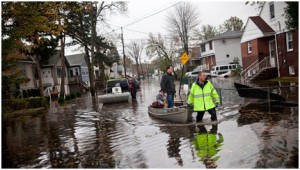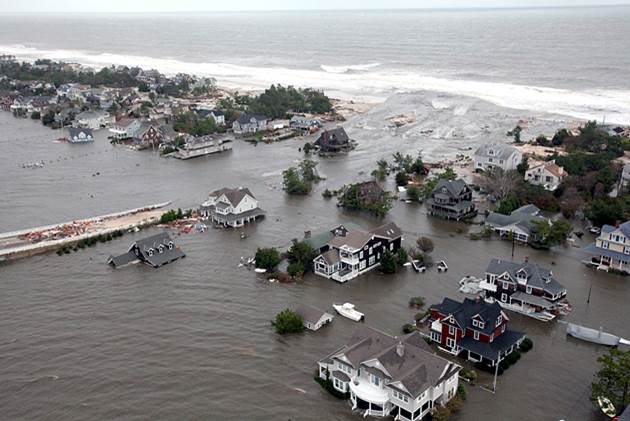New Jersey Future Blog
Rebuild By Design Projects Must Ensure Equity, Resiliency, Public Involvement
January 21st, 2015 by Megan Callus

Sandy-related flooding in Little Ferry, a municipality within the New Meadowlands project area. Photo credit: Andrew Burton/Getty Images
New Jersey Future has submitted comments (pdf) on the state’s proposed Amendment 12 to the New Jersey Disaster Recovery Action Plan. This amendment details how the state will spend $380 million in Sandy rebuilding funds to advance two projects selected by the U.S. Department of Housing and Urban Development (HUD) through its Rebuild By Design (RBD) initiative. Rebuild by Design was a design competition of international architects, engineers and planning professionals to generate comprehensive long-term strategies for improving flood resilience in vulnerable communities.
Both the New Meadowlands project and the Resist, Delay, Store and Discharge project in Hudson County would use innovative design strategies such as berm construction, green infrastructure, storm water basins, and wetland restoration to ensure the areas can function well with water, rather than being damaged by it.
New Jersey Future commends the state for focusing investment in developed areas that are at great risk of flooding. Although the projects provide innovative resiliency models other communities can emulate, New Jersey Future is concerned with the proposal’s lack of detailed consideration for the needs of vulnerable populations; the failure to acknowledge rising sea levels and ensure safety from future flooding; the absence of a meaningful process to engage stakeholders; and the New Jersey Department of Environmental Protection (DEP)’s capacity to manage and implement the RBD initiatives.
Our comments recommend specific revisions to the amendment, including the following:
- Identify vulnerable populations, develop strategies for preventing low- and moderate-income residents from being displaced and prioritize funding for these communities so that RBD dollars are being spent equitably in the RBD project communities.
- Establish a detailed public participation process, similar to that executed by the RBD initiative, that outlines the kinds of organizations that will be engaged, the method of informing them, the opportunities for public input and comment, and how the public’s concerns and feedback will be incorporated.
- Adopt a flood-elevation standard in the design phase of both projects that will be protective through 2100.
- Provide DEP with the staff and funding resources needed for robust management over the full lifetime of these projects.
















